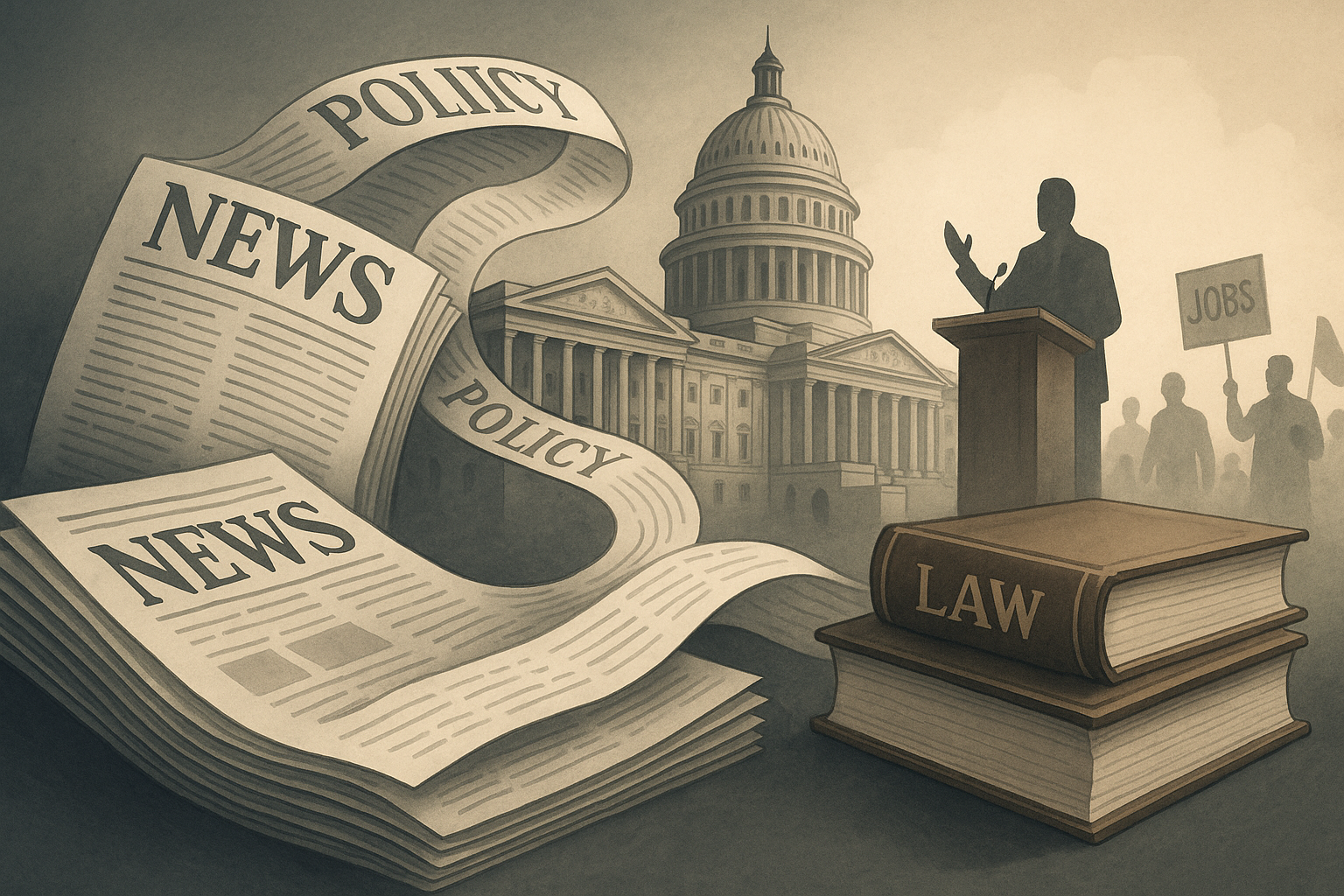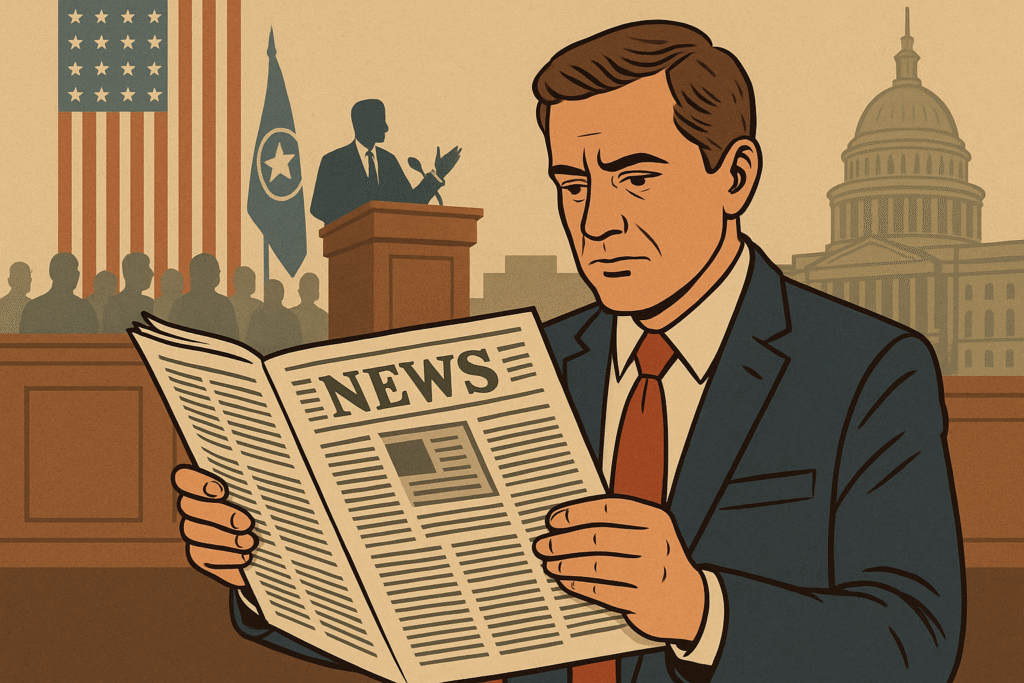
✨ Introduction
Every day, the news we read, watch, or listen to does more than just inform — it influences how we think, what we care about, and ultimately, how our governments respond.
From political scandals and economic crises to social justice movements and health emergencies, the media plays a powerful role in shaping public opinion and, in turn, public policy.
In this blog, we’ll explore how the news impacts policy-making — from setting the political agenda and framing national debates to sparking legislative action and public reform. Let’s uncover how headlines can turn into laws.
📰 The Influence of News on Public Policy: How Headlines Shape Our Laws
In the age of 24/7 media, news is no longer just a mirror of society — it’s an engine that drives change. From local ordinances to national legislation, the stories we see, hear, and share play a pivotal role in shaping public policy.
📌 What is Public Policy?
Public policy refers to the principles and laws that guide government actions. These can include everything from education reforms and healthcare access to climate regulations and immigration law.
But policy doesn’t arise in a vacuum — it responds to pressure, data, emotions, and visibility. That’s where news comes in.
🧠 How News Media Influences Policy Decisions
1. Agenda Setting: What Gets Talked About, Gets Done
One of the most potent tools of the media is agenda setting. This concept, coined by communication scholars, means the media doesn’t tell people what to think, but rather what to think about.
When news outlets give extensive coverage to issues like gun violence, inflation, or housing shortages, they push these topics to the top of the public and political agenda. Politicians take note — because what’s on the public’s mind often determines electoral success.
2. Framing the Narrative
News coverage also shapes how we think about issues. For example:
- Immigration framed as a “crisis” vs. a “humanitarian issue” results in drastically different policy responses.
- Economic policy described as “support for families” versus “increased government spending” sways public opinion.
The media’s choice of language, imagery, and source selection can frame policy debates in ways that align with or oppose specific agendas.
3. Public Pressure and Voter Behavior
Viral news stories can ignite public outcry and force rapid political responses. Think of:
- The George Floyd protests sparking police reform discussions.
- COVID-19 reporting influencing mask mandates and vaccine rollouts.
- Environmental disasters pushing climate change up the legislative ladder.
Elected officials watch media trends closely — because public sentiment, shaped largely by news, impacts re-election chances.
4. Investigative Journalism: Exposing Policy Gaps
Many policy changes begin with bold, investigative journalism. Think of the Panama Papers, or coverage of unsafe housing conditions in marginalized neighborhoods.
These stories uncover systemic issues, often prompting formal investigations, public demands, and legislative reform.
🌐 The Role of Social Media in Modern Policy Influence
Traditional news media is no longer the only game in town. Social media now accelerates the impact of news in these ways:
🔄 Speed of Dissemination
A story once buried in a paper can now trend globally within minutes, reaching policymakers through retweets and shares before the nightly news even airs.
📣 Citizen Journalism
Every smartphone is a news station. Ordinary citizens recording injustice can spark nationwide debates and policy changes — as seen with body cam and phone footage of police encounters.
💬 Echo Chambers & Polarization
While faster information can fuel awareness, it can also entrench bias. Algorithms feed users similar viewpoints, deepening ideological divides and influencing policy preferences based on incomplete narratives.
🏛️ Case Studies: News Driving Policy in Action

📍Case 1: The Water Crisis in Flint, Michigan
Persistent media coverage, especially investigative reporting by independent outlets, eventually forced state and federal governments to address the city’s contaminated water — leading to criminal charges and infrastructure investment.
📍Case 2: Gun Legislation after Mass Shootings
After tragedies like Parkland and Uvalde, widespread media coverage helped amplify student voices, organize marches, and push states toward stricter gun laws — even amidst congressional gridlock.
📍Case 3: Roe v. Wade and Reproductive Rights
Coverage of leaked SCOTUS drafts, protests, and personal stories has significantly influenced state-level reproductive legislation and voter turnout — a powerful blend of news and public sentiment guiding lawmaking.
🧩 Challenges: When News Misleads Policy
❗ Misinformation and Sensationalism
Not all news coverage is balanced. Sensationalism can distort facts and incite panic, leading to rushed or misinformed policy. Misinformation about vaccines, for instance, led to public health setbacks.
⚖️ Media Ownership and Bias
When news outlets are owned by large corporations or political groups, reporting may skew to serve interests rather than the public good — subtly steering policy debates away from objectivity.
🛠️ How to Be a More Informed Citizen
As media consumers, we have power too. Here’s how to use it wisely:
- 🕵️♂️ Verify stories across multiple reputable sources.
- 🧠 Think critically about framing — what words are used and what’s being left out?
- 🗳️ Engage civically by contacting representatives or joining policy-focused groups.
- 🔁 Share responsibly — amplify truthful, constructive news that fosters dialogue, not division.
✅ Final Thoughts
News is more than a record of events — it’s a force that builds or breaks the policies that govern us. From local zoning decisions to federal legislation, what’s reported and how it’s reported carries immense weight.
By understanding this influence, we can navigate headlines more intelligently and become proactive contributors to the policies that shape our communities.
Disclaimer:
This blog is intended for informational and educational purposes only. The views expressed are personal opinions or general insights, not professional or legal advice. Readers should do their own research or consult relevant professionals before taking action based on this content.
#PublicPolicy #MediaInfluence #NewsImpact #AgendaSetting #PoliticalReform #SocialMediaAndPolicy #InvestigativeJournalism #CivicEngagement #NewsAndGovernment #carrerbook#anslation#PolicyChange #FlintWaterCrisis #MediaBias #MisinformationAwareness #VoterInfluence #GovernmentAccountability

Leave a Reply